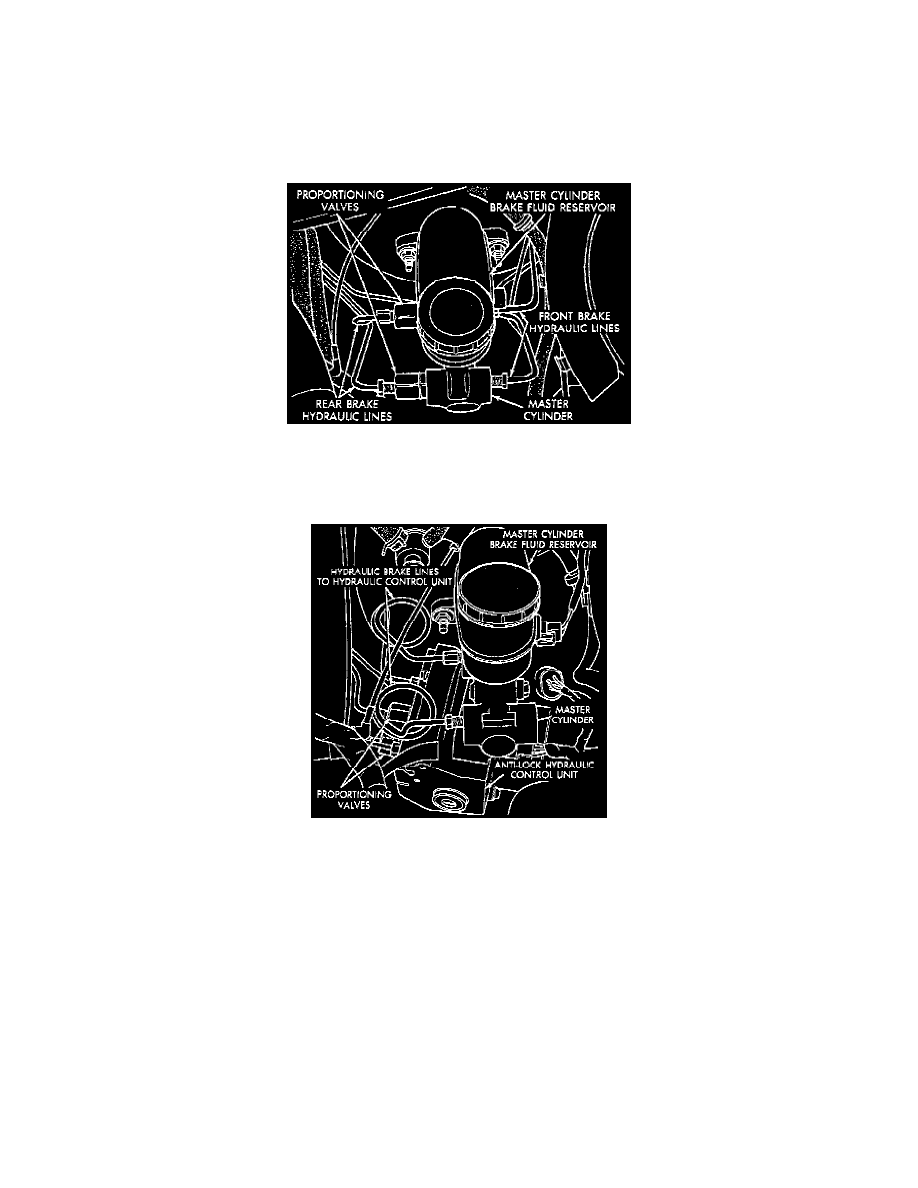Sebring Convertible V6-2.5L SOHC 24 Valve (1996)

Brake Master Cylinder: Description and Operation
Without Antilock Brakes
This type of master cylinder, utilizes screw-in proportioning valves at the master cylinder instead of a combination valve. With this new design, the
chassis brake tubes connect directly from the master cylinder to the brake flex hose.
Vehicles not equipped with Antilock Brake System (ABS) use a standard compensating port design, while vehicles equipped with ABS use a center
valve design.
Fig 4 Type 3 Master Cylinder. Less ABS
In addition, the non-ABS master cylinders are a four outlet design with two screw-in proportioning valves attached directly to the inboard side of the
master cylinder housing.
Fig 5 Type 3 Master Cylinder. With ABS
The ABS master cylinders are a two outlet design with the screw-in proportioning valves attached to the ABS Hydraulic Control Unit (HCU). Vehicles
equipped with rear drum brakes use a master cylinder with a 21 mm bore, while vehicles equipped with rear disc brakes use a 7/8 inch bore master
cylinder.
The body of the master cylinder is an anodized aluminum casting. It has a machined bore to accept the master cylinder piston and threaded ports with
seats for hydraulic brake line connections. The brake fluid reservoir assembly is made of polypropylene plastic.
The only serviceable component on both master cylinders are the reservoir and the sealing grommets. Neither of the master cylinder assemblies can be
serviced, and must be replaced as an assembly.
On non-ABS master cylinders, the primary outlet ports supply hydraulic pressure to the left front and right rear brakes.
